Five years ago on May 5, 2017, I launched Keebio and announced it to the world. Back then, the store just had Cherry MX deskmats, diodes, TRRS jacks, Pro Micros, and switch springs. Not too long after, I added in Gateron switches and my first keyboard PCB, the Nyquist.
Ever since then, it’s been quite a blur to think through everything that’s taken place until now, so I’ve dug through all the keyboard releases I’ve done and put together a timeline, so here we go.
2017
Nyquist Rev. 1 - May 2017
The very first keyboard PCB I designed, read all about the design process here: The Many Failures of Keebio PCB prototypes
I still have the very first prototype of it hanging on the wall at my office behind me.
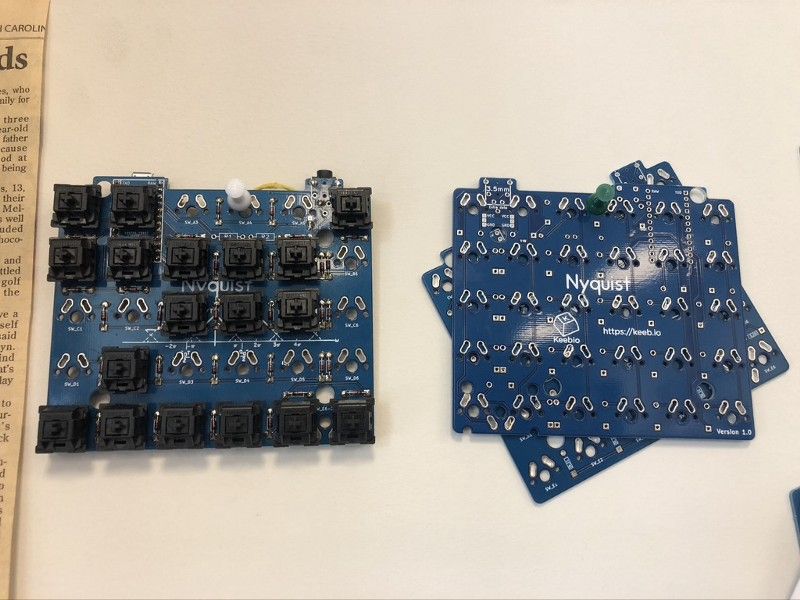
Viterbi Rev. 1 - September 2017
Soon after the release of the Nyquist, some people requested that they wanted an additional column to be added to it. So the Viterbi was born.
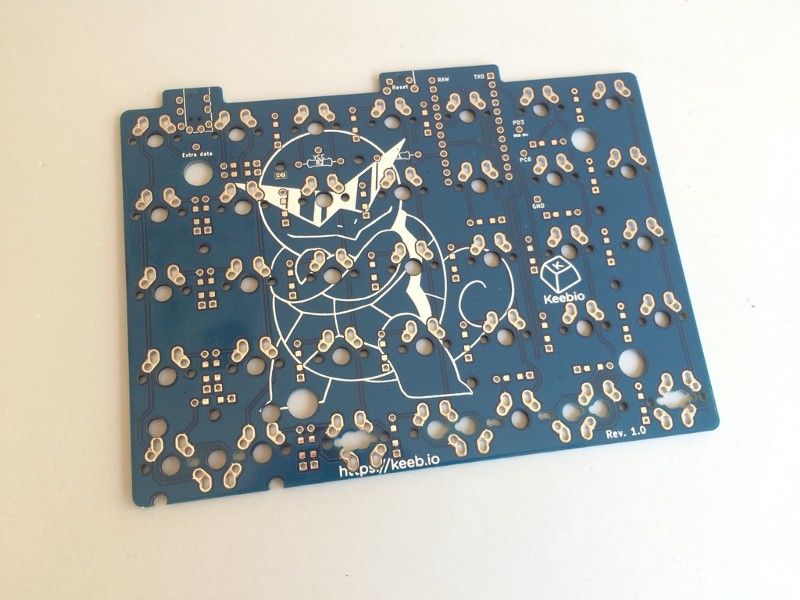
Iris Rev. 2 - October 2017
The most popular board at Keebio. Here’s the origin story about it: Lewis Ridden and the Story Behind the Iris
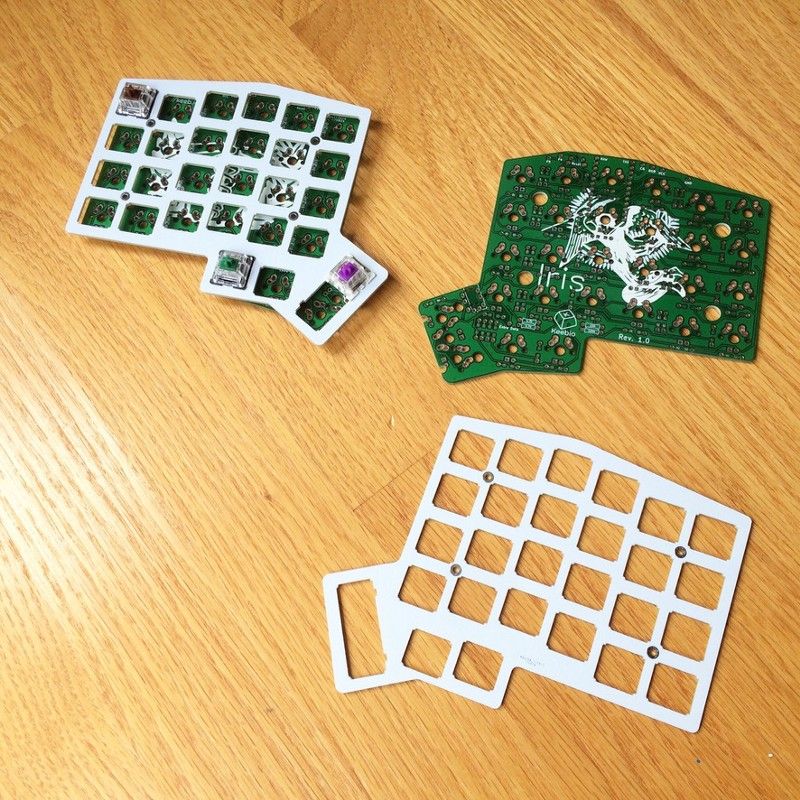
You may be wondering why the Iris revision number starts with 2 instead of 1. It’s because for Rev. 1, the LED pin was placed on a non-PWM pin, which caused lighting issues at the time. I also did not realize this until after I had sent off a couple of units to people, so I just decided to bump up the revision number for the actual release.
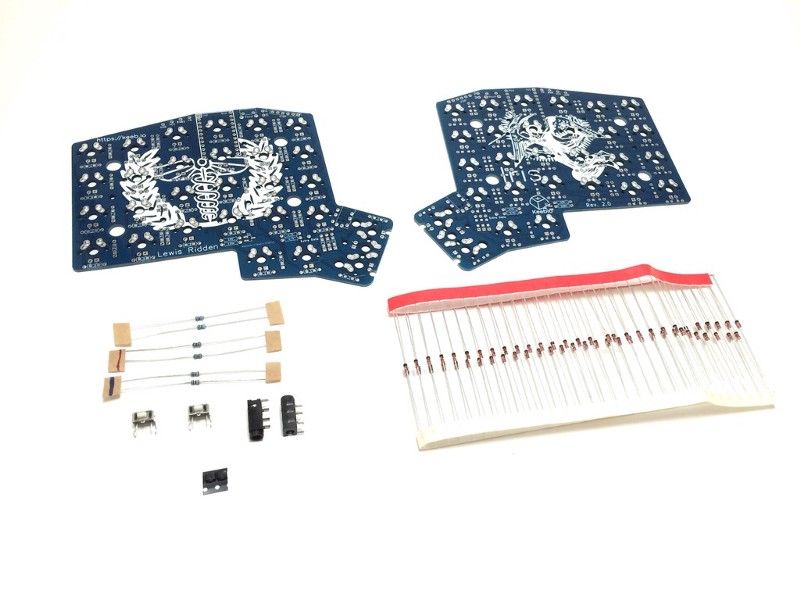
Sales for the Iris were strong, and early on, it used to sell out frequently. It took a while for me to get a good hold of operations to keep it in stock better.
Levinson Rev. 2 - November 2017
My favorite keyboard layout is a split 4x6 ortho board, and while the Let’s Split met that form factor, I wanted to put my own spin on the board and add in-switch lighting. I also added into it a 2u-thumb key option.
I don’t fully remember why Rev. 1 was never officially released, but I figure it was probably a lighting pin issue as well, like the Iris Rev. 1.
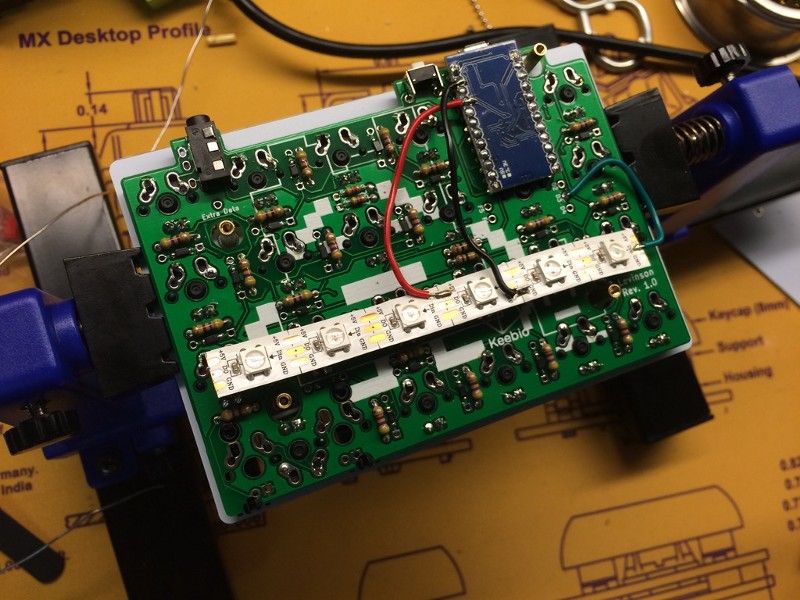
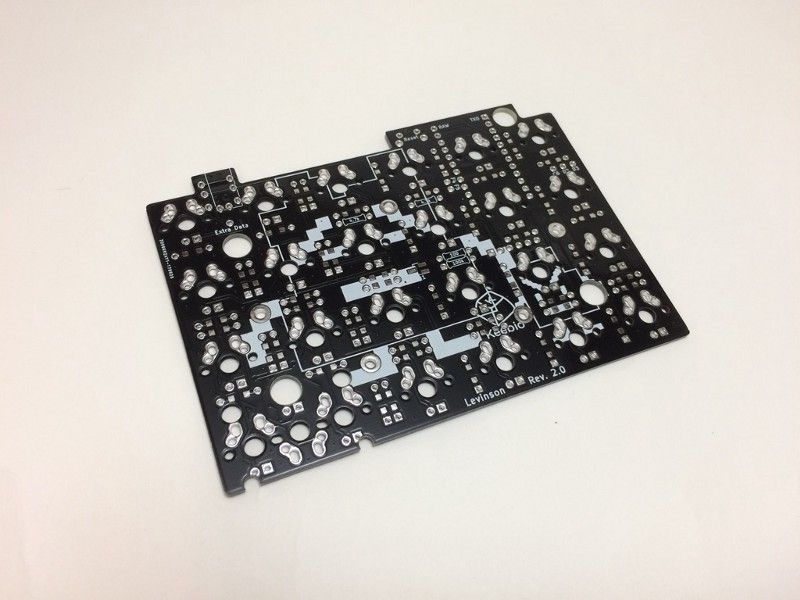
2018
Dilly - February 2018
I started to delve into the world of Kailh Choc switches, and came up with the Dilly, a 3x10 ortho layout, and a play on the original MX-version of it, the Gherkin. I should note here that di0ib, the creator of the Gherkin, was the source for the idea of using FR4 PCBs as switch/case plates, so shoutout to him for putting this info out.
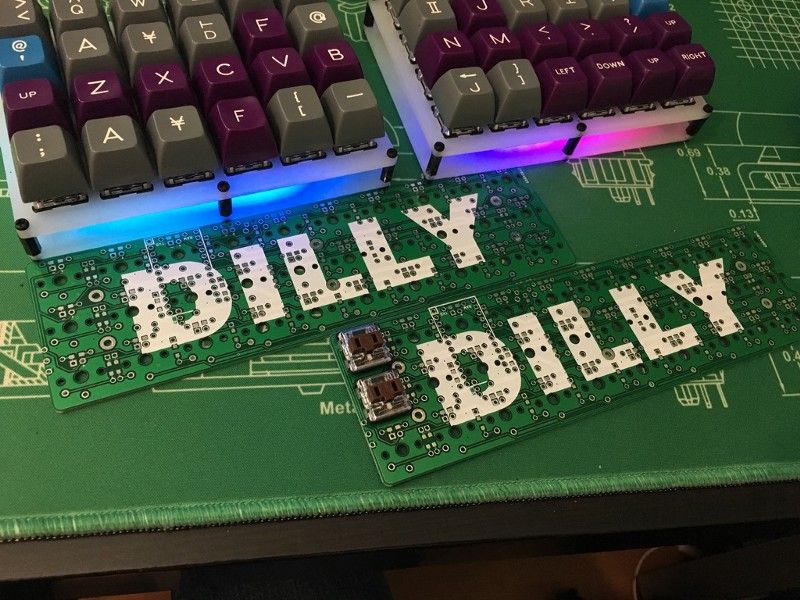
Chocopad - February 2018
Alongside the Dilly, I created the 4x4 Chocopad, mainly to serve as a switch tester for what were the 8 different Choc switches.
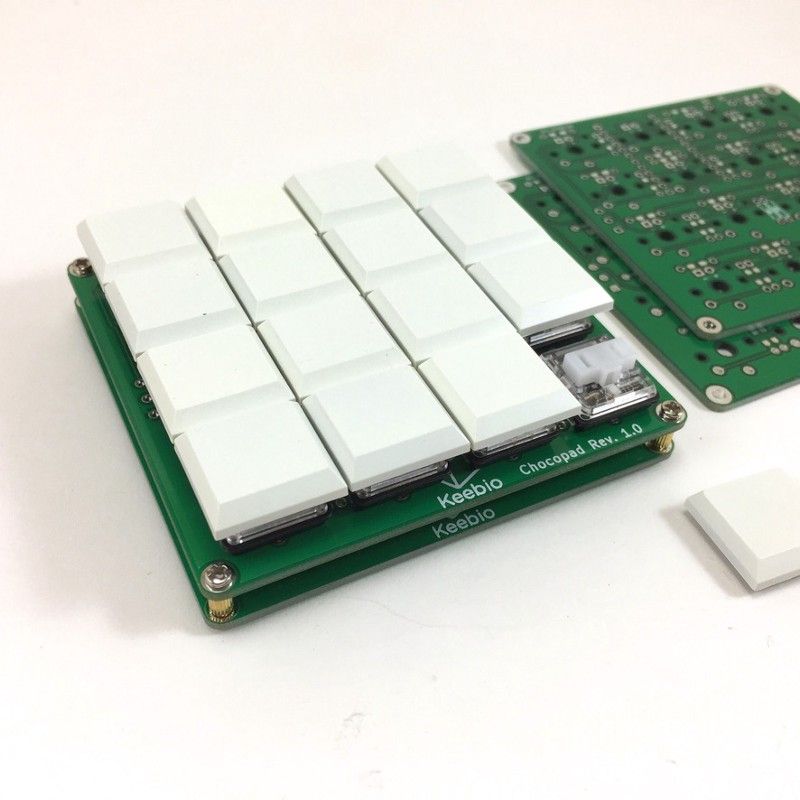
The Chocguy was born at this time as well, as I commissioned an artist to take a Choc switch and make some kind of chibi character out of it.
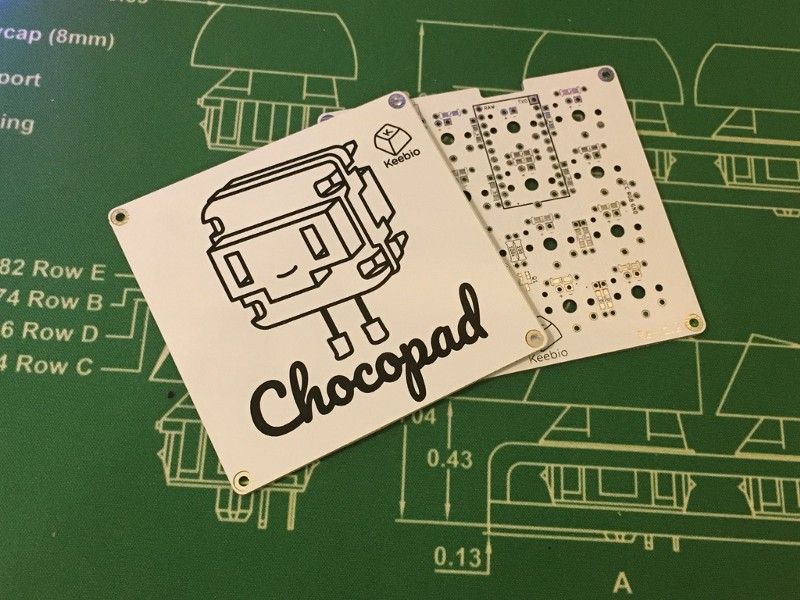
Fourier Rev. 1 - March 2018
With the Fourier, I decided to fill in a gap in the keyboard community by creating a split staggered 40% keyboard. The Caravan existed, but that was a very limited run.

Laplace Rev. 1 - April 2018
At the same time as the Fourier, I developed the Laplace, which was simply just the non-split version of the Fourier.
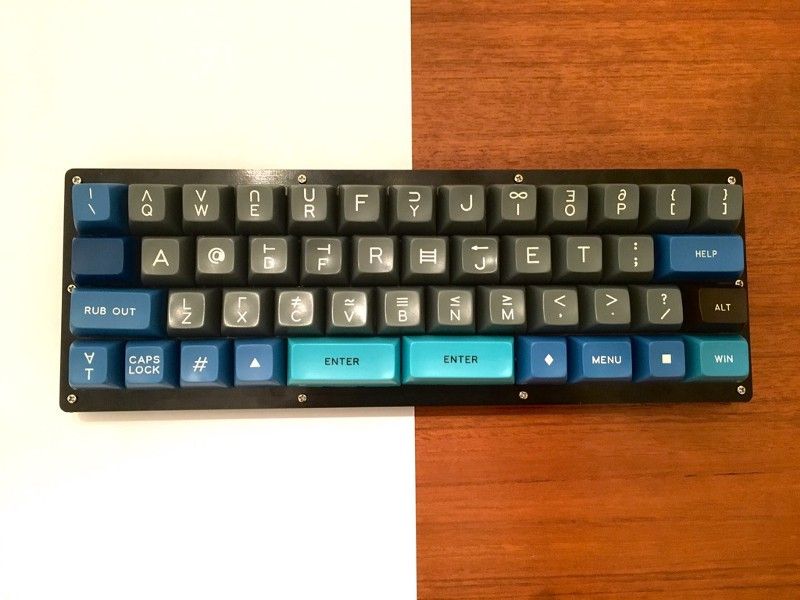
Rorschach (Unreleased) - April 2018
I tried to create more of an endgame keyboard layout for myself, so I took the Levinson and added some more thumb keys to it in a circular arc. After I tried it, I decided I didn’t like the extra thumb keys and scrapped the idea.

Nyquist Rev. 2 - May 2018
With the Rev. 2 of the Nyquist, I gave it the LED backlighting treatment, like with the Iris and Levinson.
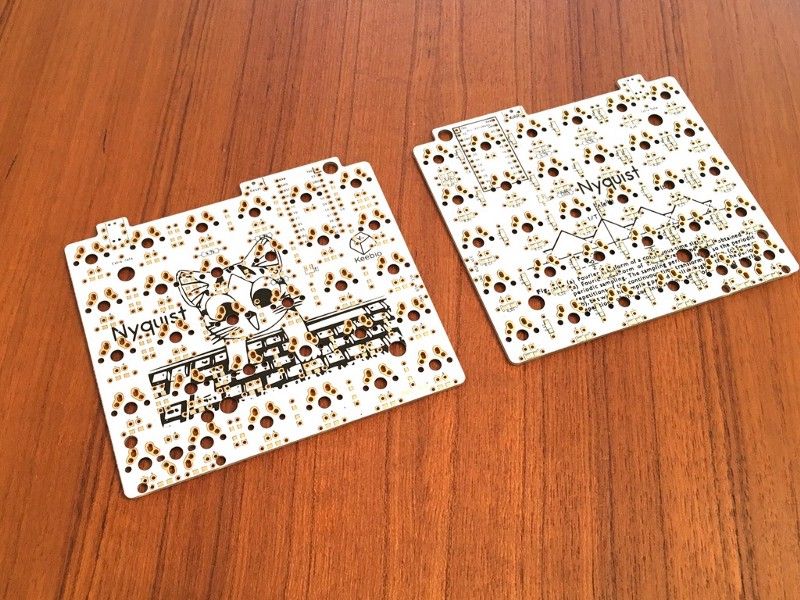
BFO-9000 Rev. 1 - May 2018
5x7 wasn’t large enough for some people, so I went bigger and designed a 6x9 split ortho board. The number of rows and columns can be reduced by breaking them off, allowing it to go as low as 4x7.
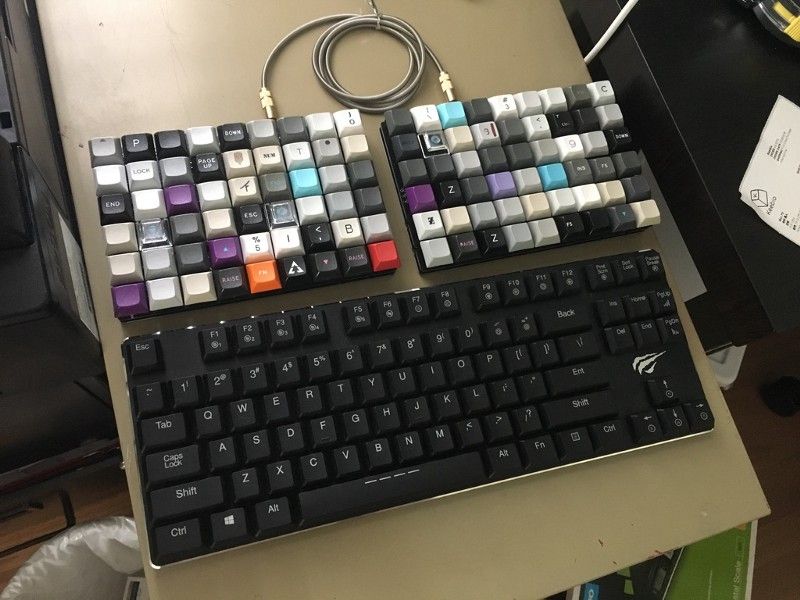
Quefrency Rev. 1 - August 2018
People really wanted a split 60% keyboard, so I came up with just that. I also experimented with using aluminum plates from the PCB manufacturer at this time. A decent amount of the layout inspiration came from koduh68: http://sonorankeyboards.com/#lynx

Wavelet (Unreleased) - August 2018
In another one of my experiments with Choc switches, I made a 4x12 Choc board. I tried to get a bit fancy and attempted to add a way for Mini-USB to be used, but it required too much work with getting a pigtail setup, so I tossed the project aside. I repurposed the name as the name of the bi-weekly newsletter.

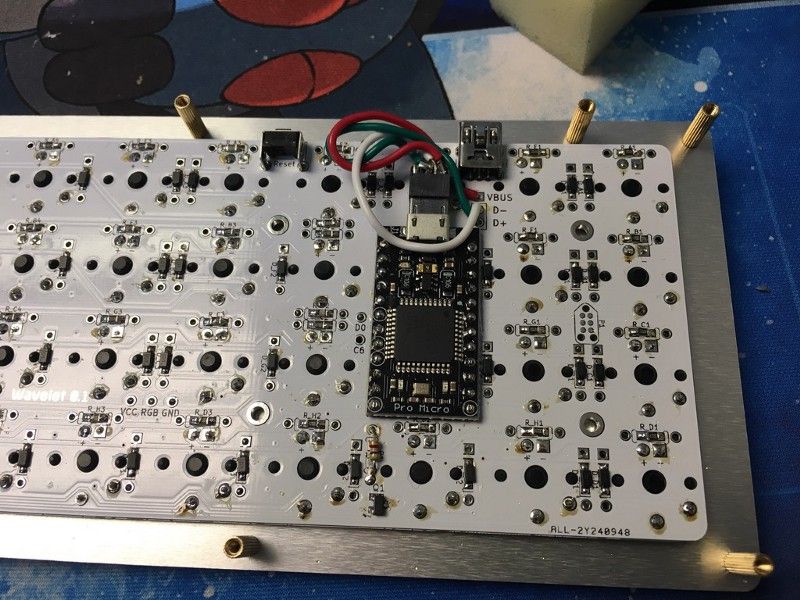
Quefrency 65% Right Half PCB - September 2018
Soon after the release of the Quefrency, I got a lot of requests for a 65% version of it, where there’d be an additional column on the right half. So I added a column to the PCB design. Overall, the 65% right half has been much more popular than the 60% right half. This also met the needs of koduh68’s endgame requirements for a split 65%, as seen from the note he put on the page for the Lynx.
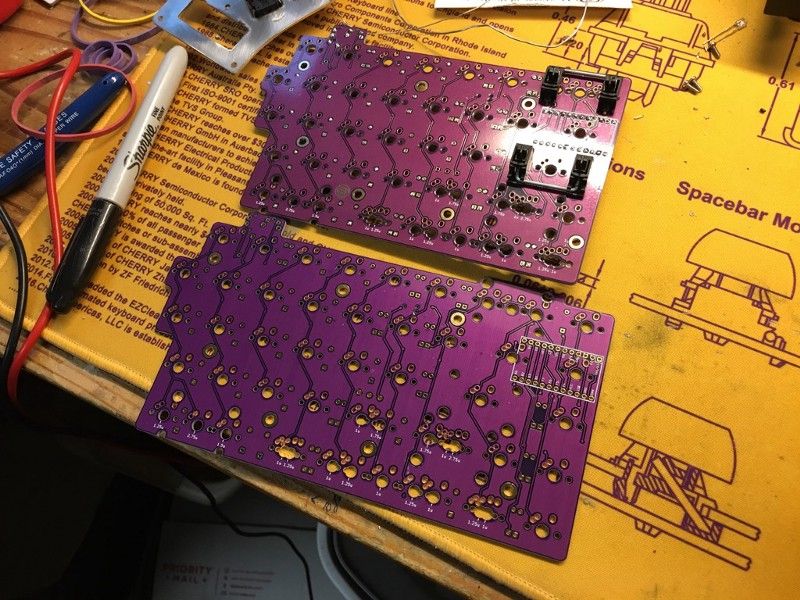
Tragicforce 68 - November 2018
The Tragicforce 68 was my own take on a replacement PCB for the Magicforce 68, which was my first mechanical keyboard. Differences from the MF68 PCB were the ability to use PCB mount stabilizers instead of just plate-mount ones and split-space support.
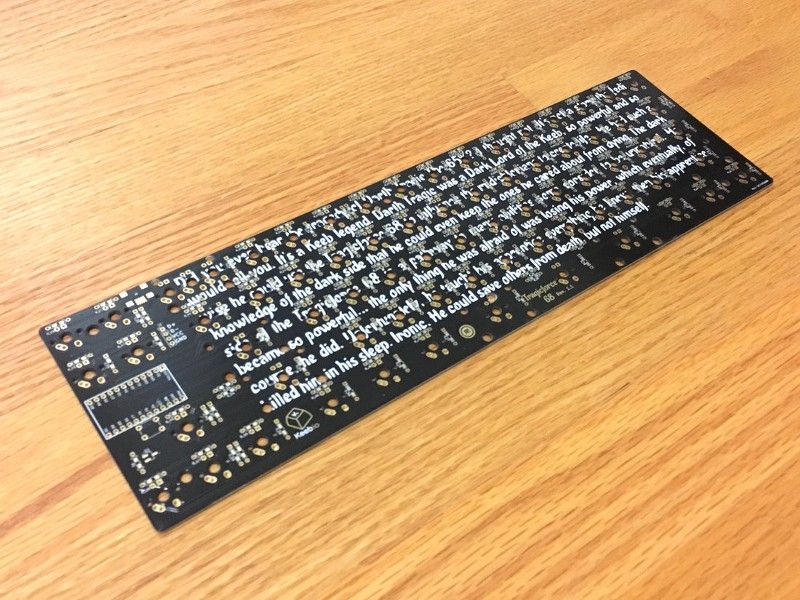
I also tried doing a set of aluminum plates to make a standalone case for the board, but a tragic series of errors occurred. Here’s a list of what went wrong along the way:
- Incorrect spacing of cutouts on plates, causing it to be too wide and misaligned
- Use of SMD Mini-USB port, causing it to rip off more easily
- Forgot to add mounting holes for Mini-USB port, so plastic legs on port had to be cut off
- Logo messed up on bottom plate
- When PCB mount stabilizer support was added, the PCB was extended out more at the bottom, causing it to hit the bottom edge of the Magicforce 68 case. The case then had to be modified quite a bit to get the PCB to fit
All of this led to me getting frustrated with the project, so I tossed it aside.
2019
Viterbi Rev. 2 - January 2019
I stopped liking the idea of flippable PCBs, where the left and right halves use the same PCB. There were too many build issues with that and confusion with determining in firmware which half was which. The Viterbi Rev. 2 was the first step in phasing out flippable ortho/ergo PCBs. LED support was also added in.
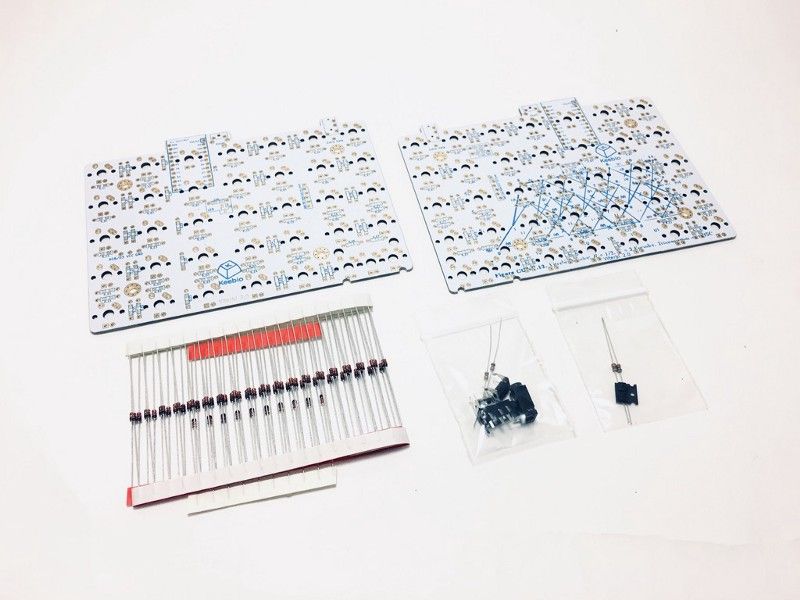
BDN9 Rev. 1 - January 2019
Rotary encoder support in QMK was added at the end of 2018. I wanted to explore the use of encoders on a keyboard, so I came up with a simple 3x3 macropad to play around with them. Given the low cost of the board, it let other people test out encoders as well.
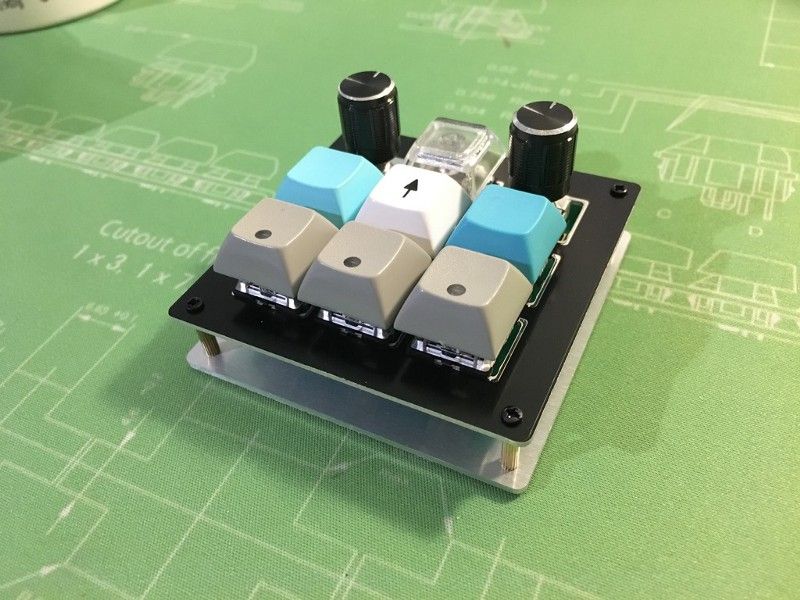
Quefrency Left Half w/Macro PCB - February 2019
I’m not entirely sure of how I decided to add the 2x5 macro section to the left half of the Quefrency, but it probably came from looking at boards like the Red Scaff II+ Ver. B. Like the 65% right half, this option for the left half became the more popular one.
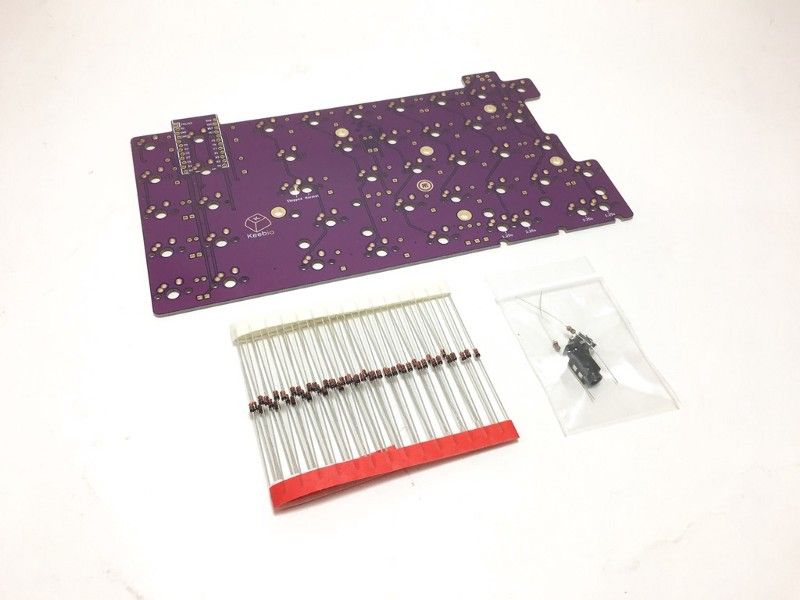
Iris Rev. 3 - April 2019
The Iris Rev. 3 was a major release, as it was the first Keebio PCB that had an integrated microcontroller on it, instead of using Pro Micro controller. This reduced the amount of soldering by a lot and made the PCBs a bit more professional looking than before.
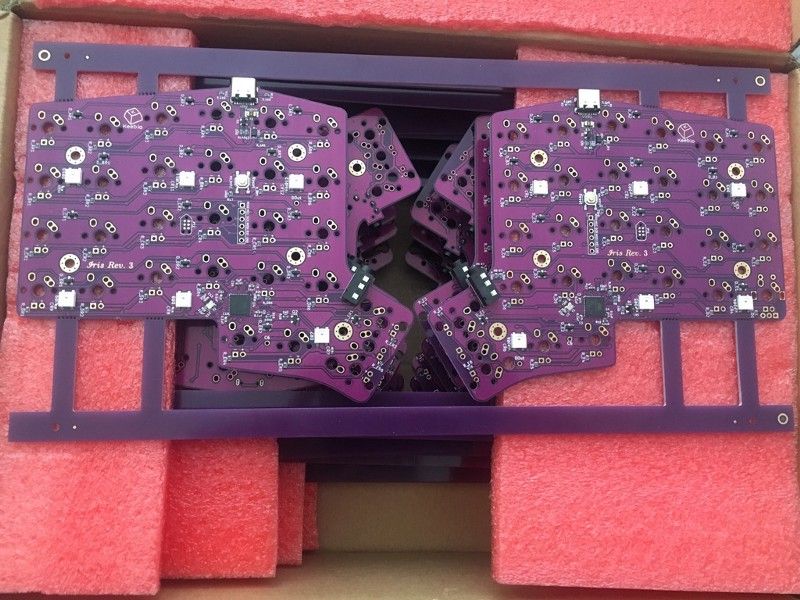
Ergodicity (Unreleased) - June 2019
The set of Choc keycaps that Kailh offers is very odd. It does not resemble a standard set, with weird sizes like 2.5u Shifts and 5.5u Spacebar. Because of that, I didn’t want to design a Choc version of the Quefrency. Then one day, I realized that if I did an Alice-style layout, I could deal with that freak show of a keycap set and make that set useable. The Ergodicity was the result, and I rushed to get a prototype PCB and plates made in time for the Seattle meetup.
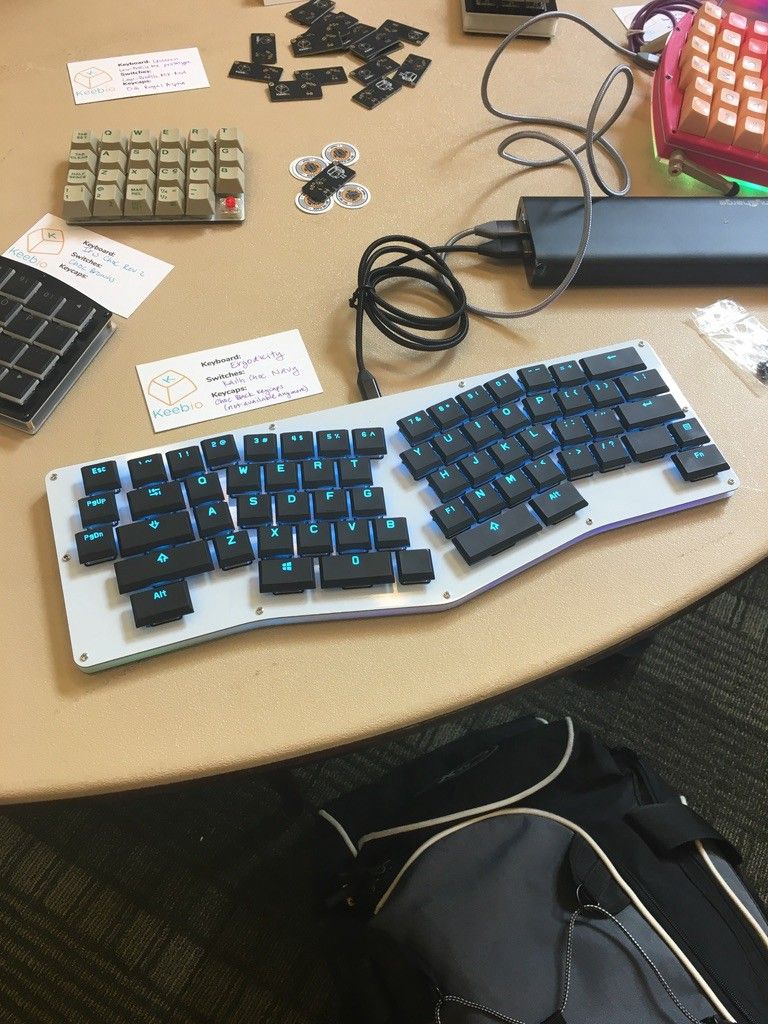
I had to make some more adjustments to the plates to handle the stabilizers better, but one of the main things holding me back from releasing the board is that the Choc stabilizers aren’t designed particularly well. The primary issue is that if you push the stabilizer stems all the way into the keycap, the switch does not fully return to the top after being pressed.
I designed a shim to attach to the bottom of the keycap stabilizer pieces to create the needed separation between the keycap and the stabilizer stem, but it just feels like a hacky solution. My ideal solution is to either have a corrected stabilizer stem made or for the keycaps to have a longer stabilizer holder. Until that happens and a properly sized keycap set is made, I don’t plan on creating a Choc version of the Quefrency/Sinc.

The Ergodicity may show up in non-prototype form at some point, as I have licensed out the design, so you may be able to get your hands on one eventually.
Keychain PCBs - July 2019
I’m not the first person to come up with a keychain tag with switch pads on it, as seen with this design:
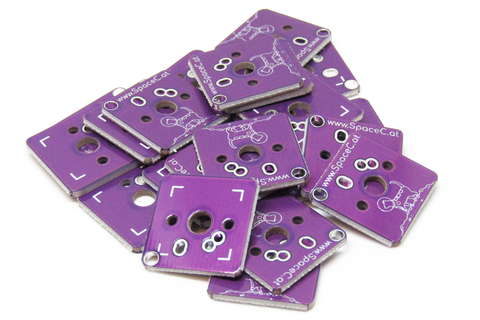
I decided to make one that was 1u by 2u wide, stick a small keycap ruler on there, and feature the ever so lovable Chocguy on there. These were included for free with each order, replacing stickers. (We now include both a free keychain PCB and sticker with every order). Later on, I released more colors with different keyboards featured.
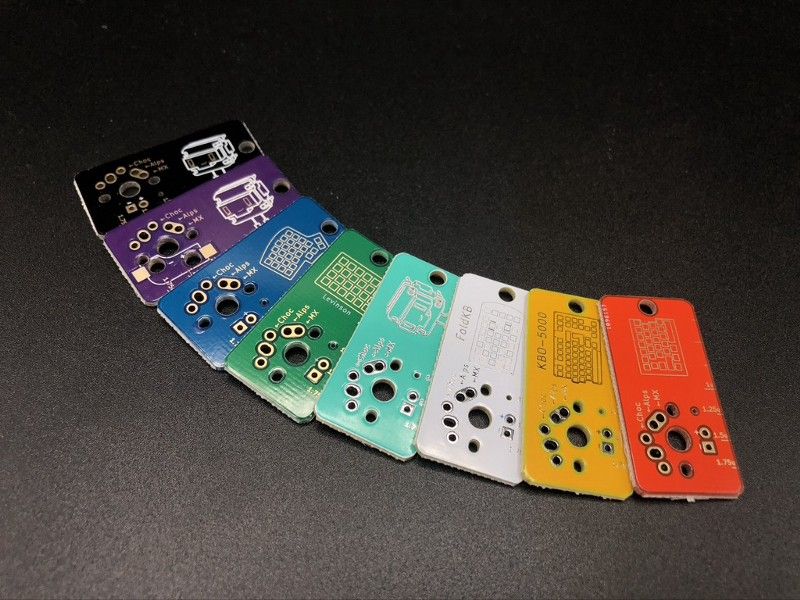
Tukey - August 2019
The Tukey came about by customer request. Someone wanted 1x2 Big Switch case and was originally going to buy two Big Switch PCBs, after getting burned by Woodkeys and never receiving his order. The PCB design was fairly simple, and I sent off the dimensions to Jordi at StrataKB so he could cut cases for the guy.
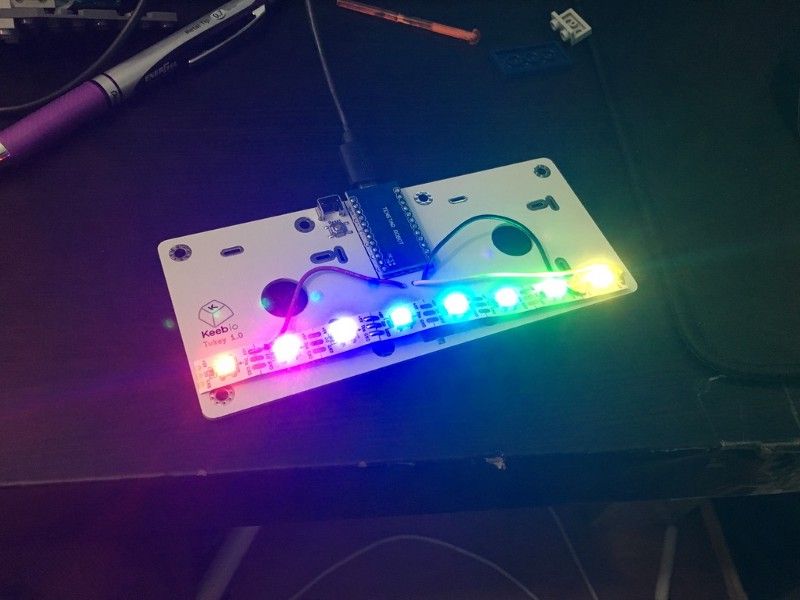
You can see the Tukey in action with the Big Milk case.

Nyquist Rev. 3 - August 2019
Following in the footsteps of the Iris Rev. 3, I gave the Nyquist the pre-assembly treatment. It also featured a bottom row that could be broken off to convert it to a Levinson layout. It was also designed to fit inside the SP50 case.
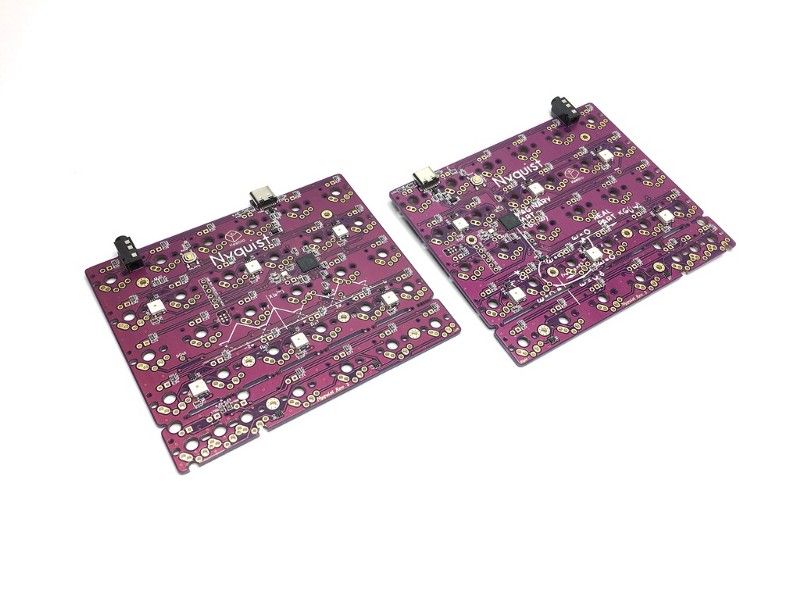
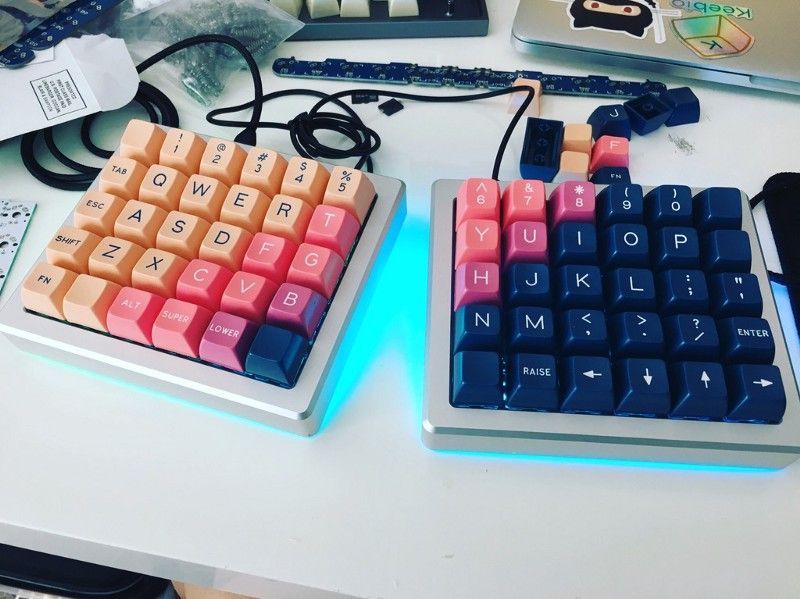
Iris Rev. 4 - October 2019
The Rev. 3 only had a single rotary encoder at the lower left corner of the left half. That’s where the Shift key normally is, so I needed to find a better location for it. For the Rev. 4, I put encoders at the upper thumbs keys of each half.
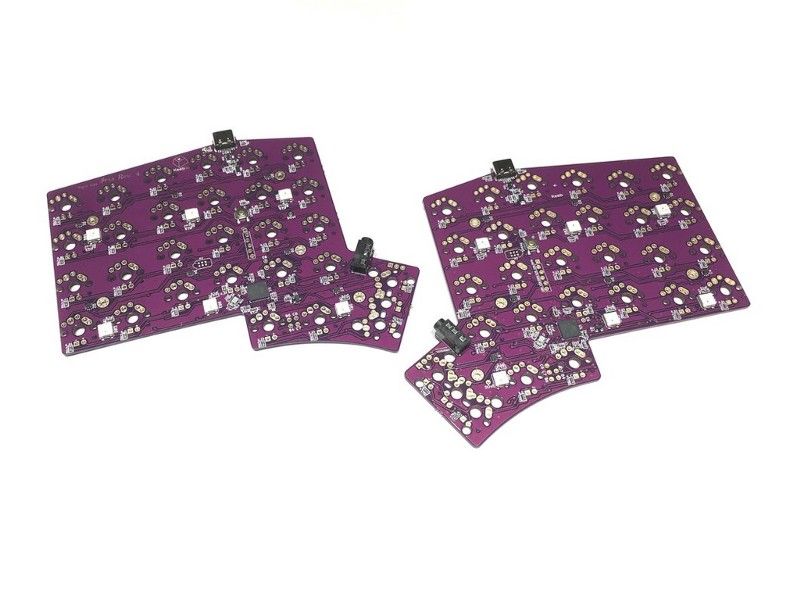
Levinson Rev. 3 - November 2019
The last of the flippable Pro Micro-based PCBs went away with the Levinson Rev. 3.
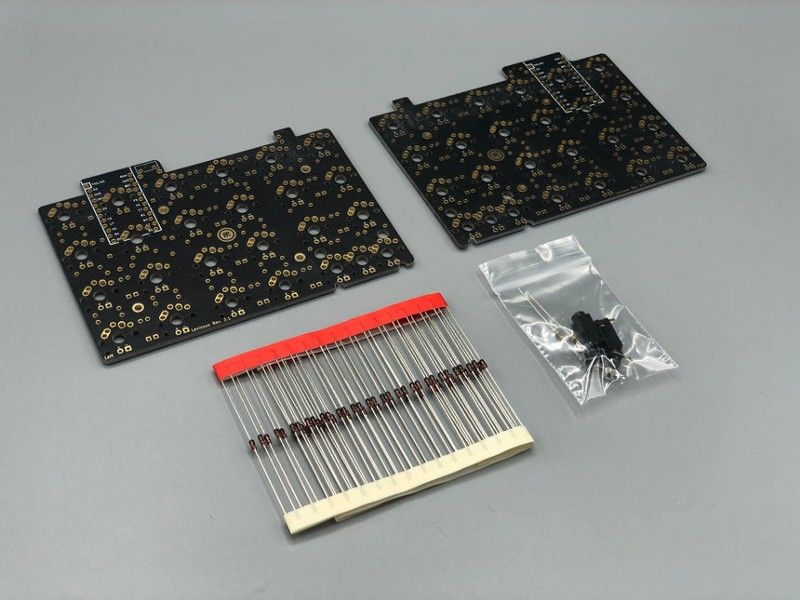
2020
Choconum (Unreleased) - March 2020
Figuring out how Kailh Choc stabilizers work was quite a mystery, as the datasheets that Kailh provided didn’t give any indication at all on how to use them. I purchased a number of boards that used the stabilizers and took lots of measurements in order to reverse engineer the plate and PCB cutouts. The Choconum was a test of that research.
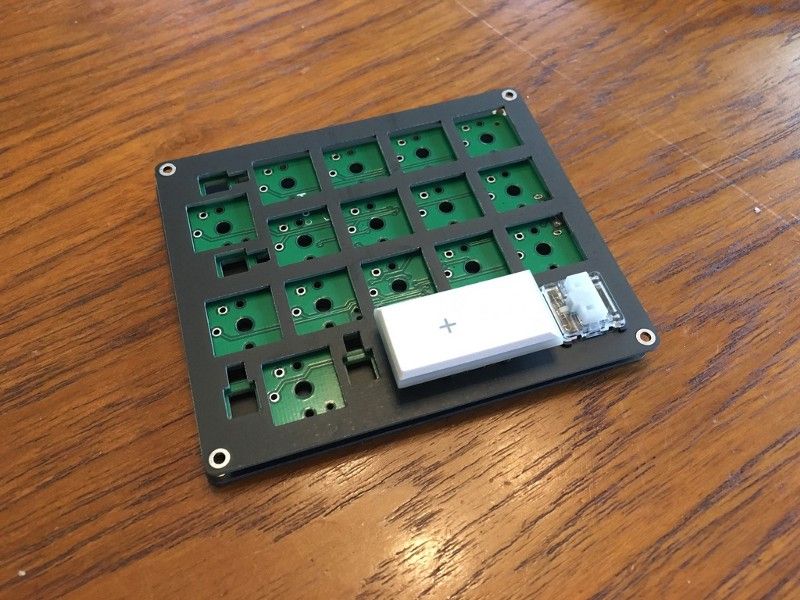
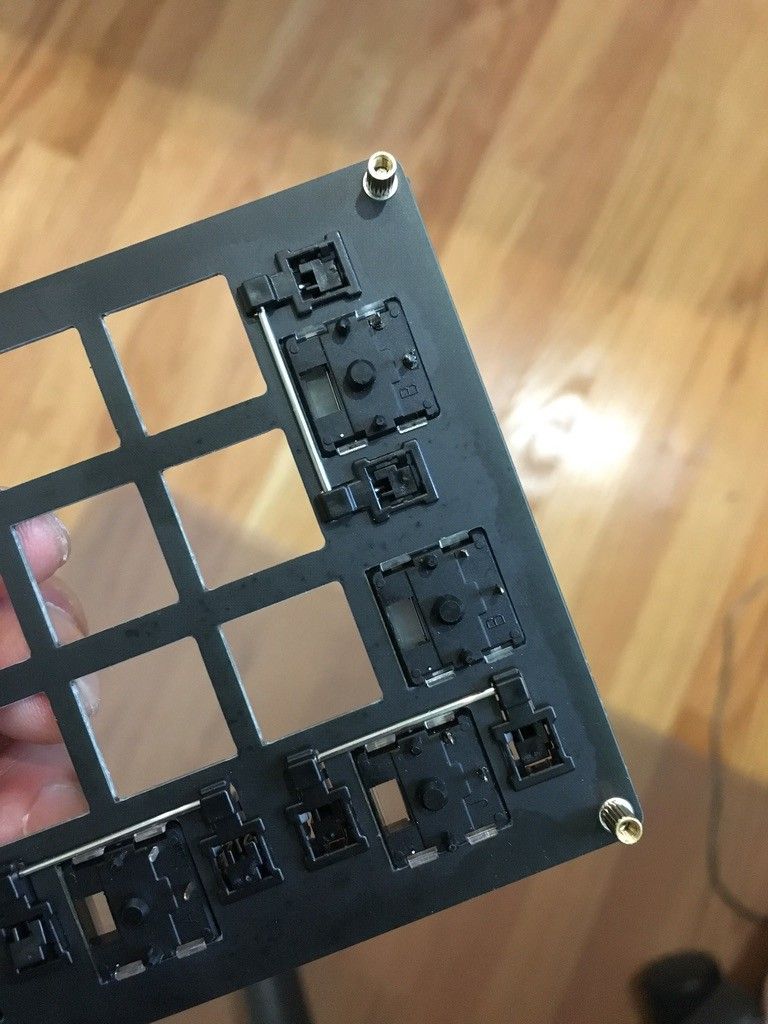
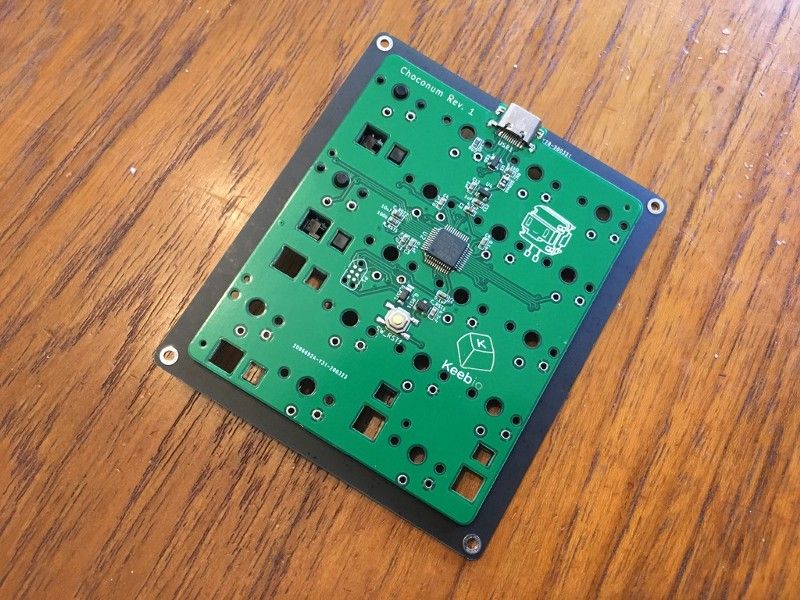
Big-O (Unreleased)— June 2020
At some point, I got a hold of a Keycult №2 TKL and instantly knew what I had to do with it: Make it into the most premium ortholinear keyboard out there for the memes. I designed an ortho PCB for it and had ortho plates made for it as well.

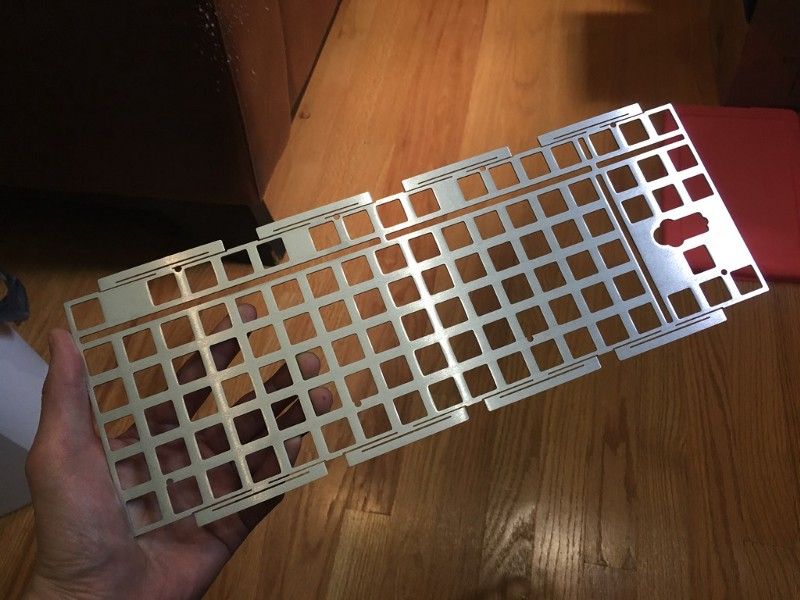
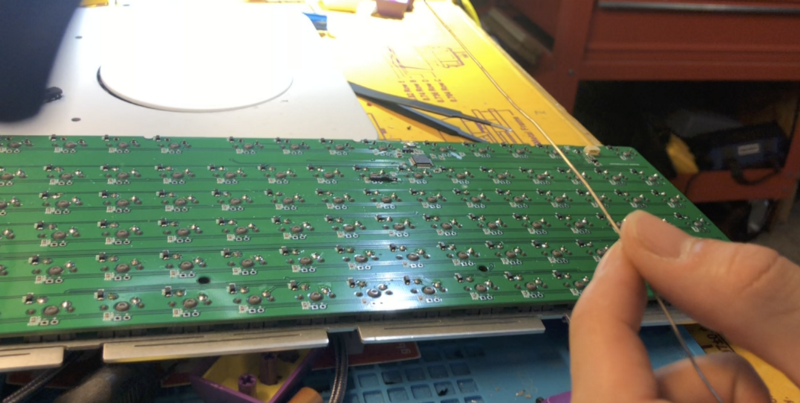
Of course, I had to top it all off with putting SA Olivia on it.
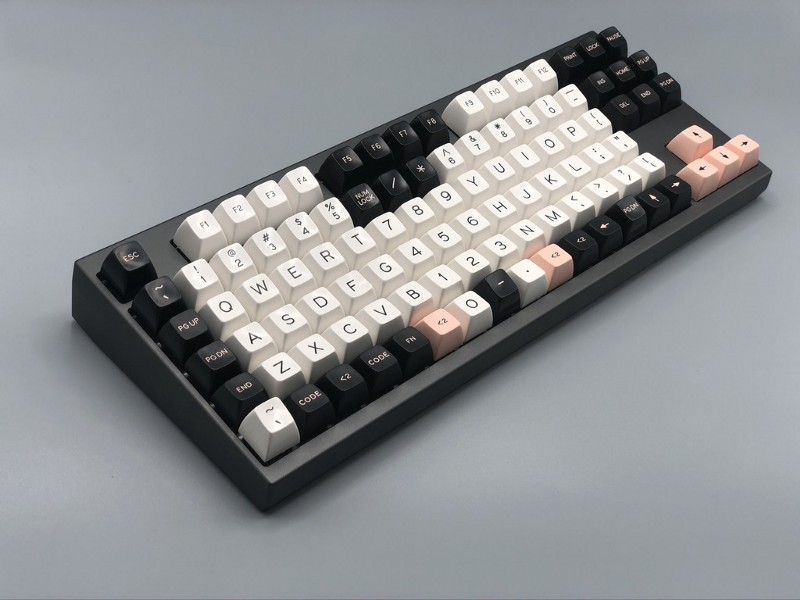
Sinc Rev. 1 - July 2020
People wanted a Quefrency but with an F-row. Done. It’s been a decently popular board, after the Iris and Quefrency.

Quefrency Rev. 2 - July 2020
Added integrated controller to the board to replace the Pro Micro. The design process for this board went slower than the Sinc, since initially, I tried designing the board using an STM32 microcontroller, but QMK split support for it wasn’t completed yet. I waited in hopes of it being completed, but after a while, I had to give up and redesign the board around the ATmega32u4.
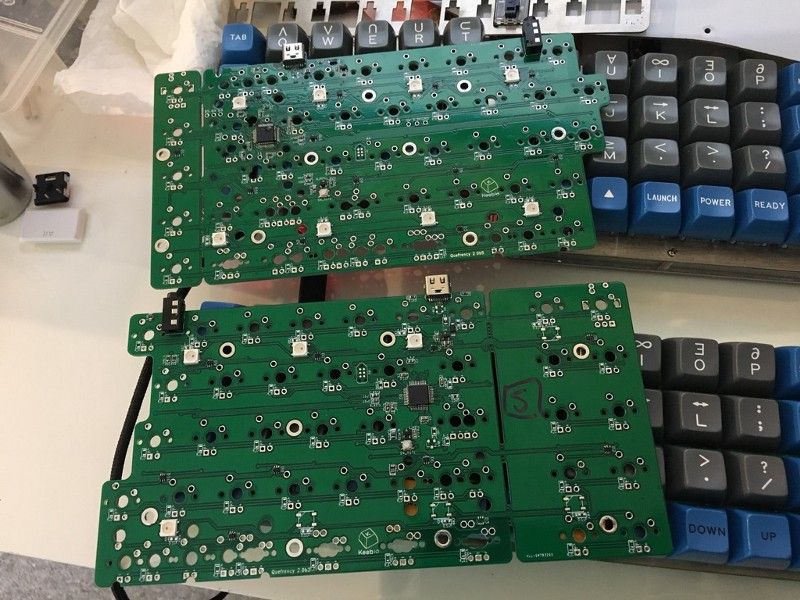
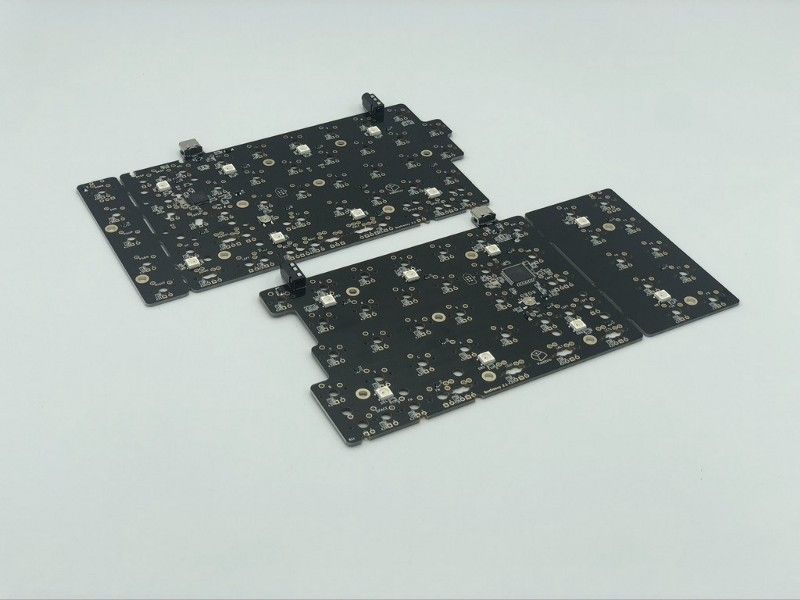
Each half has optional breakaway portions, so for the left half, you could break off the 2x5 macro section, and for the right half, you could break off the rightmost column if you like a 60% board.
New Office Space - October 2020
In September 2020, I had decided that I wanted to start transition over to running Keebio full-time (as detailed here: Moving on to the Next Phase of Keebio and Career), so I looked around and found a new office space, instead of just continuing to ship stuff from my house.
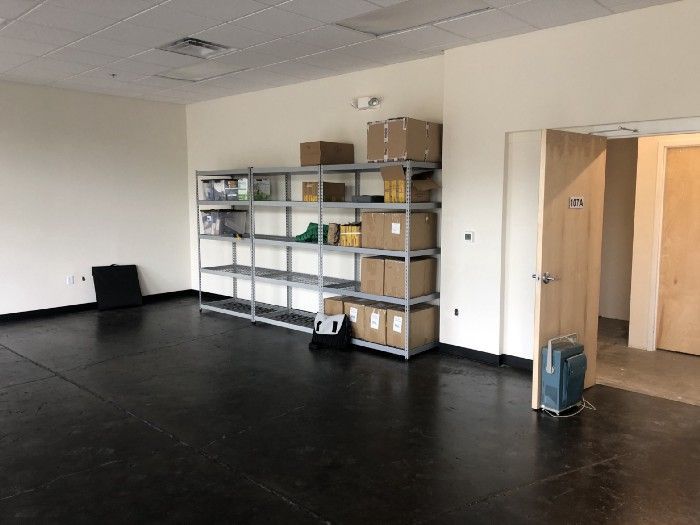
BDN9 Rev. 2 - December 2020
The Rev. 2 converted the BDN9 over to an integrated microcontroller and added per-key RGB as well. A mid-mount USB-C was used to make the board a slim as possible.
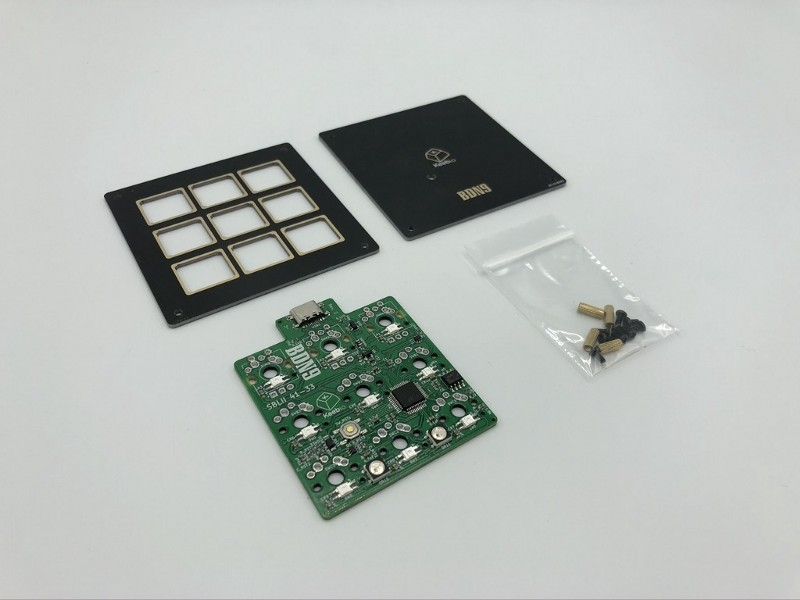
Nyquist Rev. 3.5 - December 2020
The Nyquist Rev. 3.5 was the first departure from using TRRS cables for connecting both halves together, by replacing it with USB-C. This also let it fit better into the SP50 case, as the TRRS jacks were a bit too tall to fit into the SP50 rear slots properly. The right USB-C port was also modified to be able to be broken off. To handle the port being broken off, a JST port was added to allow the board to be reflashed again as needed.
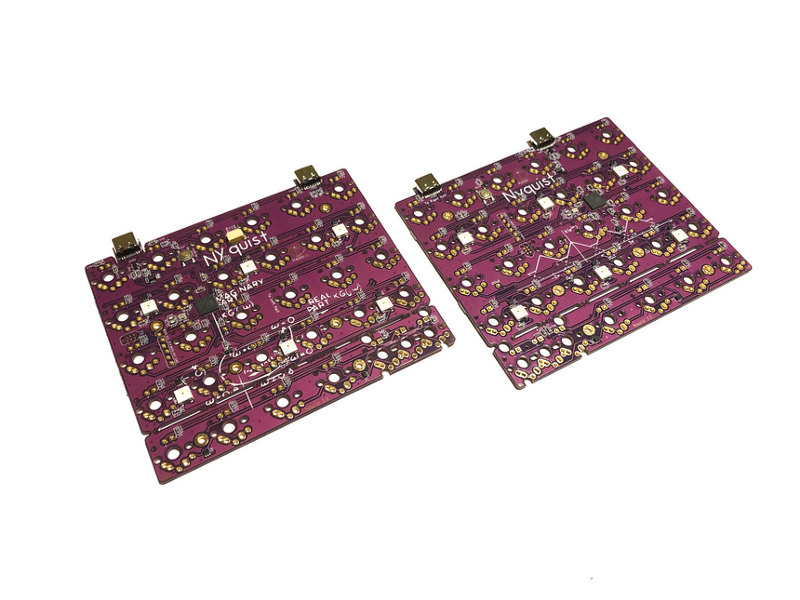
2021
The Stick Rev. 1 - January 2021
Since I don’t normally use a board with a function row (or a number row for that matter), it can be very annoying if I need to get into my computer’s BIOS settings, because I don’t remember what layer/location I’ve got the F keys mapped to. The Stick solved this problem for me by giving me a dedicated F-row keyboard for whenever I needed it.
The other reason I created it was because I had extra space on acrylic sheets that would just go to waste if I didn’t use it, so it was easy enough to squeeze a 1x12 design on there.
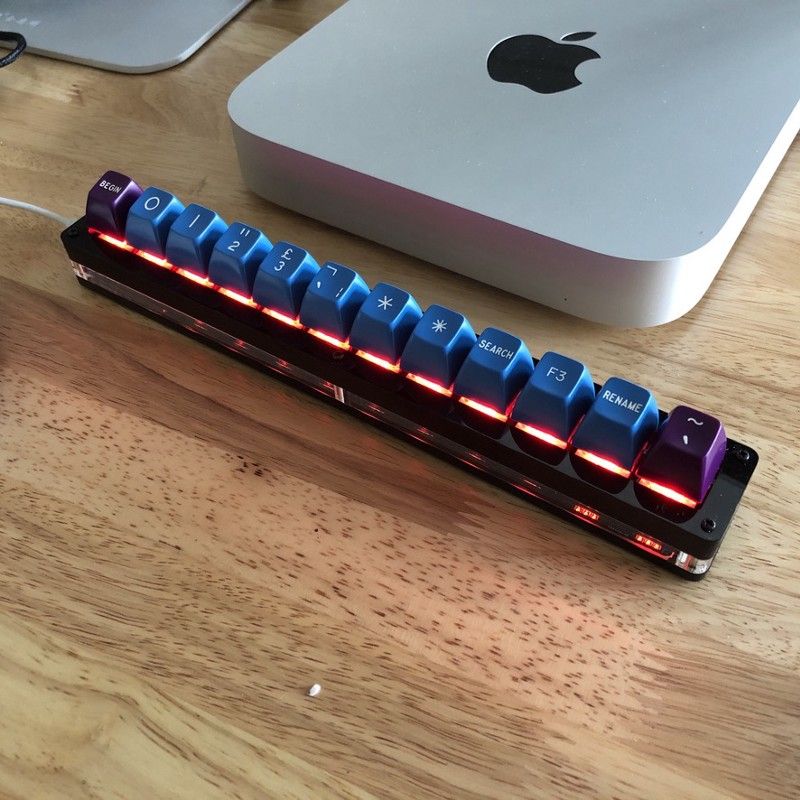
Due to the tricky build instructions in dealing with the 5mm switch plate and Pro Micro header pins, I chose not to restock it after the initial run sold out. However, a Rev. 2 is currently being worked on with an integrated controller.
DSP40 Rev. 1 - January 2021
The DSP40 was designed as a replacement for the AMJ40 PCB, since SirCheddar was designing a 40% case in his style of large bezels called the Yui40. I’ve known SirCheddar through The Board Podcast, as he used to be co-host of it, and I’ve sponsored that podcast ever since I opened up Keebio.

More recently, the DSP40 PCB has been used in the Gravestone40 keyboard.
Quefrency Rev. 3 - February 2021
Rev. 3 continued the conversion of TRRS to USB-C. No changes other than that.

WTF60 Rev. 1 - May 2021
The WTF60 is a mirrored version of a 60% PCB. Why? Why not? Can it you type on it? Yes, it’s actually not too hard to get used to typing on it, since you still have some sort of muscle memory. For instance, if you’re trying to type F on the WTF60, you still use you index finger, but it just happens to be on your other hand. Just a fun little board to mess around with.

Sinc Rev. 2 - June 2021
Yet another conversion of TRRS to USB-C.
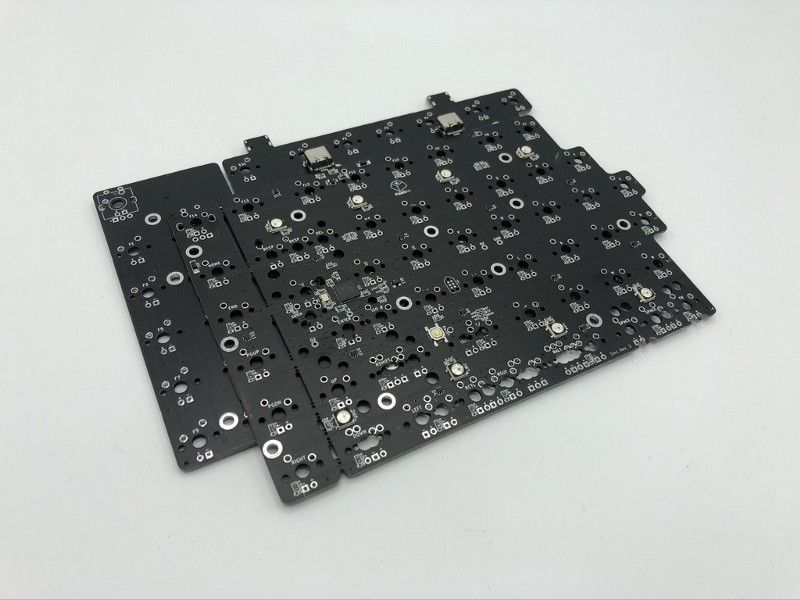
KBO-5000 Rev. 1 - June 2021
The KBO-5000 layout was inspired by the G80–5000. Apparently the G80–5000 is nicknamed Squid in the Korean keyboard community.

Iris Rev. 5 - September 2021
The TRRS purge continues. Originally I called it Rev. 4.5 like the Nyquist Rev. 3.5, but later rebadged it to Rev. 5. Due to the width of the USB-C port however, I had to make changes to the case design by altering the location of the screw holes. The previous version of plates was rebadged to Iris LE (legacy edition), whereas the new version would be called Iris PE (phoenix edition). Unfortunately, I’m stuck with a large pile of LE parts now from the transition process.
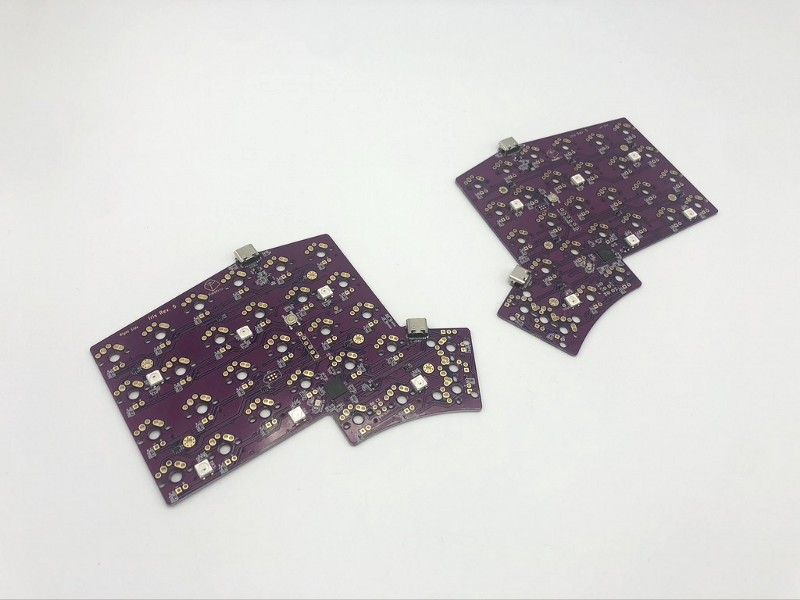
FoldKB Rev. 1 - September 2021
Like the Iris, the idea for the FoldKB was not mine, but from a friend who thought up of it 4 years ago: https://www.reddit.com/r/MechanicalKeyboards/comments/76dnyq/ic_foldkb_a_split_ortholinear_65_pics_and/ I decided to help him out by taking on the project years later. Because of the asymmetric layout of the board, I added some rounded bezels at the ends of the keyboard to make it symmetric. The original intent of that was to make it so I’d only have to order one type of bottom plate that would work for both halves, but then I decided to have the ability to select what bottom plate art you’d like.
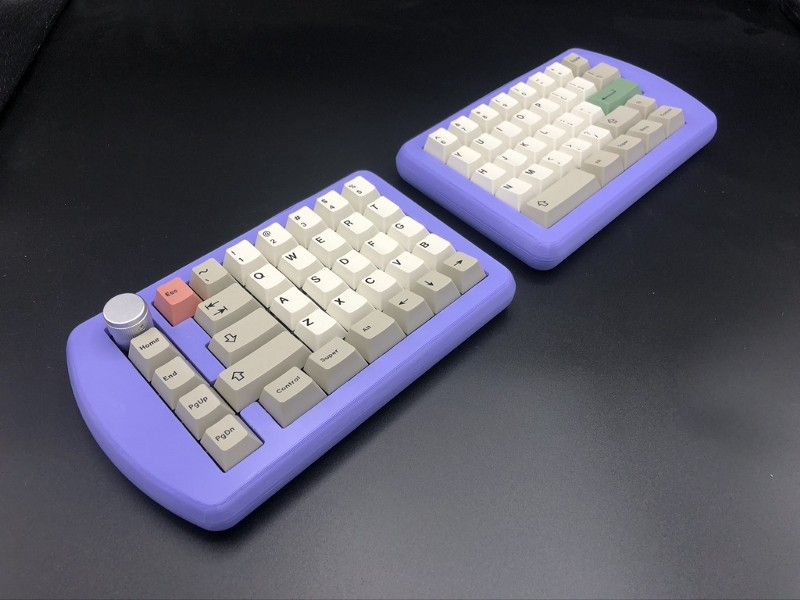
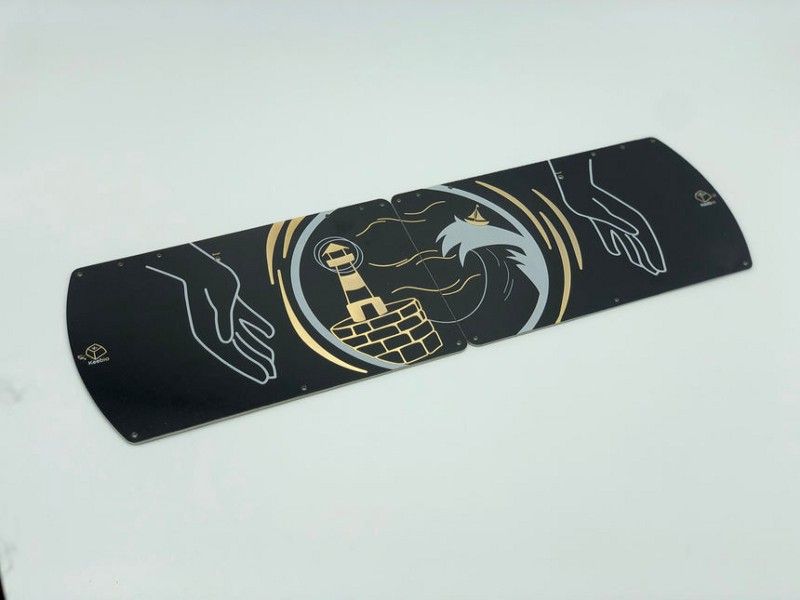
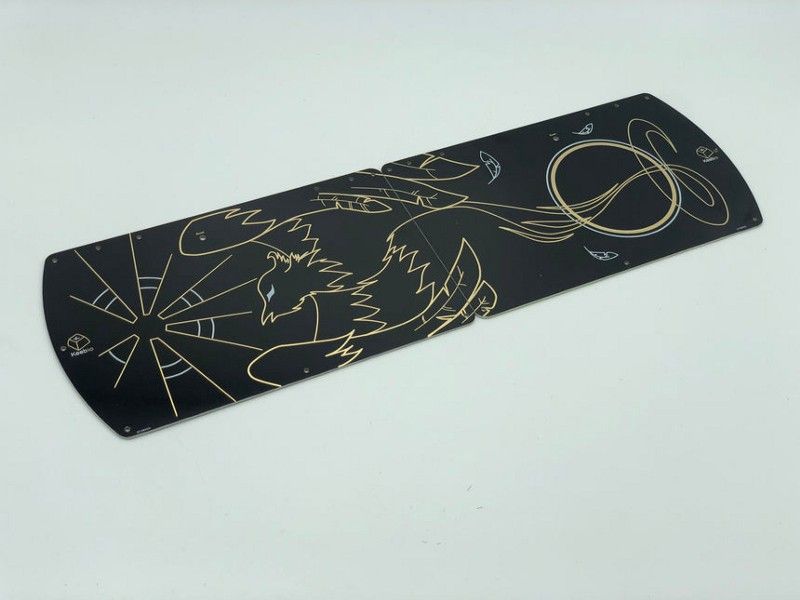
Quefrency Rev. 4 - September 2021
People like their hotswap sockets now, either because they don’t know how to solder or because they’re indecisive on switches. Anyhow, the Quefrency Rev. 4 was created as a result.
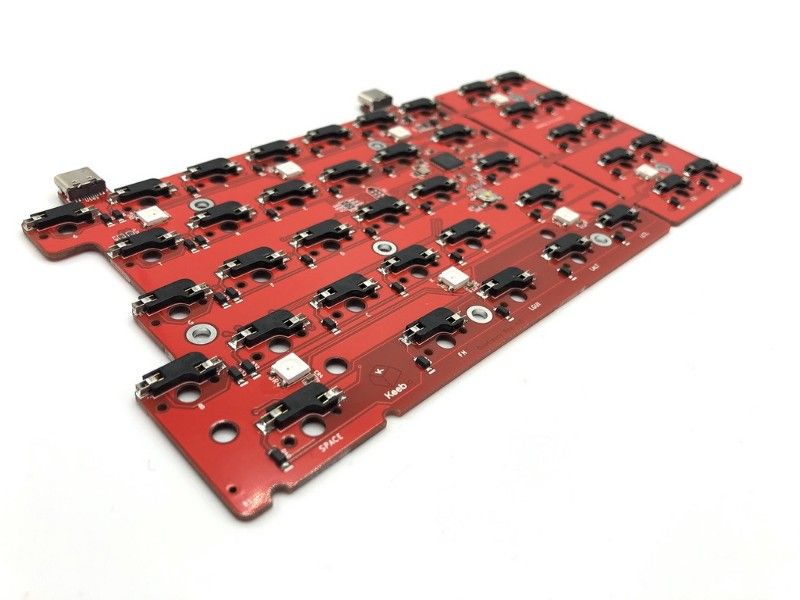
2022
Iris Rev. 6 - January 2022
I had been wanting to do hotswap and per-key RGB for the Iris since 2019, but it took a while for me to really get going on it. It’s definitely been a hit so far since its release.
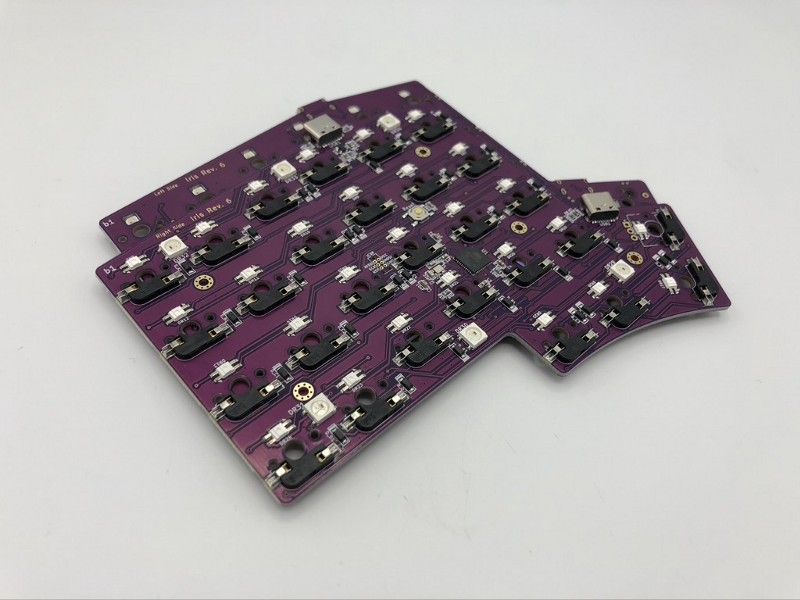
Jawn - April 2022
The Jawn marks the first foray into designing an actual case for a keyboard. For a while, I had been stuck in the world of 2D design and just did sandwich cases and stacked acrylic. But as I got into using my 3D printers more, I worked through a number of tutorial videos for Fusion 360. After a lot of practice, I finally got comfortable enough to start designing a CNC’d aluminum case.
The end goal is to design an aluminum case for the Iris, I started first by doing something for the BDN9 because it was small and would be a nice test run of sorts to figure out the process. So the Jawn was born.

As expected, they were quite a few hurdles with getting the Jawn released. Here’s some of the work involved:
- Two prototype runs of the aluminum case
- Designing and prototyping carrying case
- Ordering silicone feet
- Ordering packaging
- Ordering screws and hex keys
- Quality control inspections of the aluminum case
- Waiting for the carrying case, the final piece we were waiting for (completed alu cases sat around for about two months)
- Packing everything together
Now that the Jawn has been released, it should make the process for getting the Iris aluminum case released smoother since we’ve figured out most of the logistics.
Upcoming in 2022
Here’s some of what we’ve got planned for 2022.
BAMFK-1 - May/June 2022
The PCBs have actually arrived already, but the acrylic case and 3D-printed case designs are not quite complete yet. Also waiting on more horizontal encoders and new knobs.
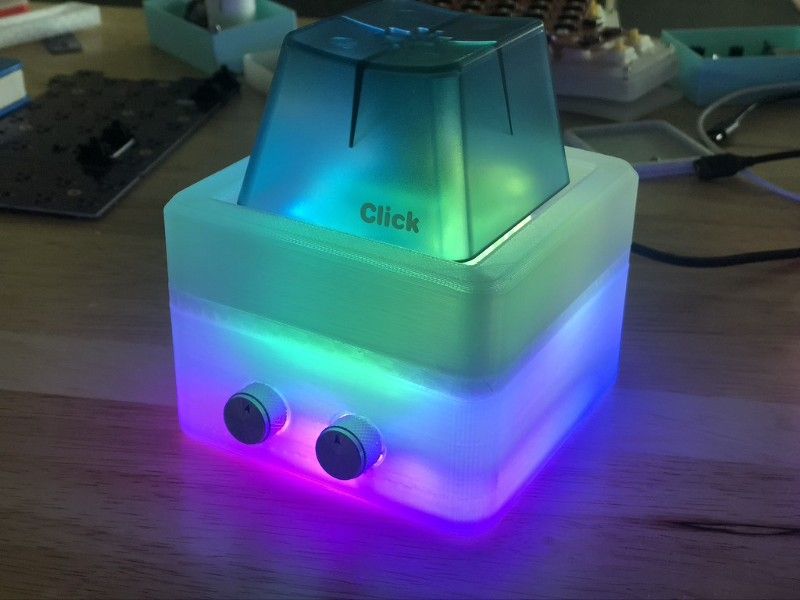
Sinc Rev. 3 - Q2 2022
Hotswap version of the Sinc, with per-key RGB expected as well. I’ve started on the PCB design for this.
Nyquist Rev. 4— Q2 2022
Hotswap and per-key RGB. Might add Viterbi layout support as well, to kill 3 birds with one stone (Viterbi, Nyquist, and Levinson).
Stick Rev. 2 - Q2 2022
Stick with integrated controller and revised case.
Iris Aluminum Case - Q3 2022
This is the big project for the year. At the moment, we’re on our second prototype of the case and testing it out.

Quefrency Aluminum Case - Q4 2022
Once we finish up with the Iris aluminum case design, we’ll be moving on to doing one for the Quefrency.
SS65XT - Q3/Q4 2022
Tentative name for a 65XT layout keyboard, which would be the very first board I’ve done with a traditional layout. The goal here is to make something fairly low-cost to make this layout more accessible to people.
10-Year Anniversary?
The past five years have been quite a ride that was not anything like I expected, and I did not imagine pumping out over 20 different keyboards during that time. I never planned on making Keebio my full-time job, so to get to where I am now has been a nice surprise. I’ve gotten to meet so many great people in the keyboard community and look forward to getting out there even more.
How long will Keebio keep going for? I honestly don’t know. I’ve seen keyboard vendors come and go and new ones popping up in their place. I’m still very much into keyboards for now and plan to keep things running. So maybe in another five years, there’ll be the 10-year anniversary. Who knows?
Thanks for all your support over the years, and there will definitely be more cool boards in store for you all to get your hands on. Stay tuned…
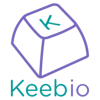

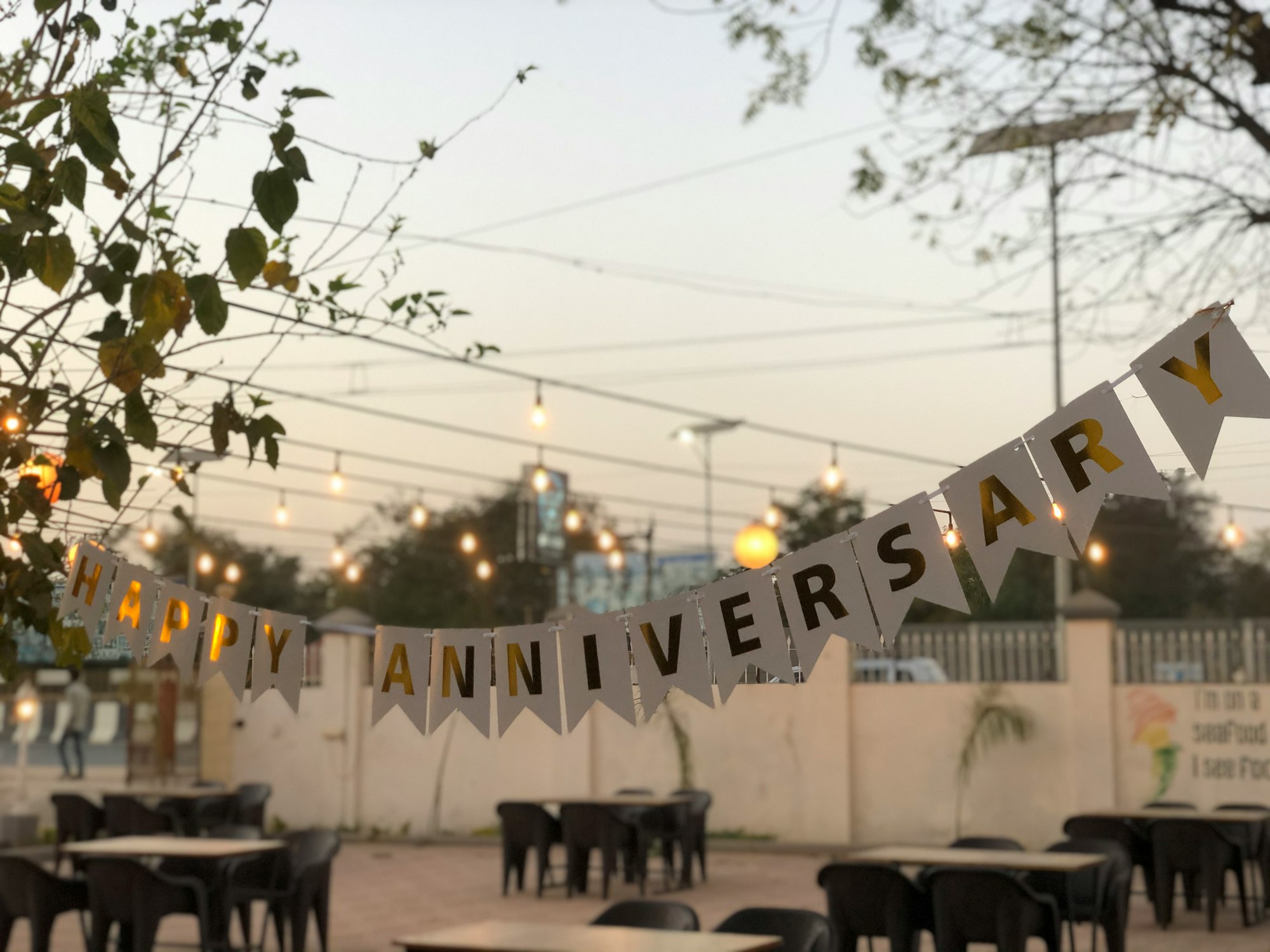
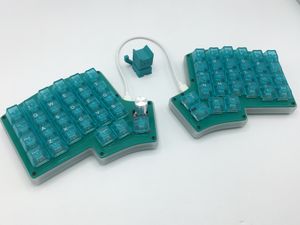
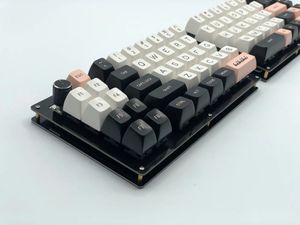
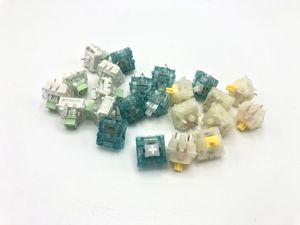
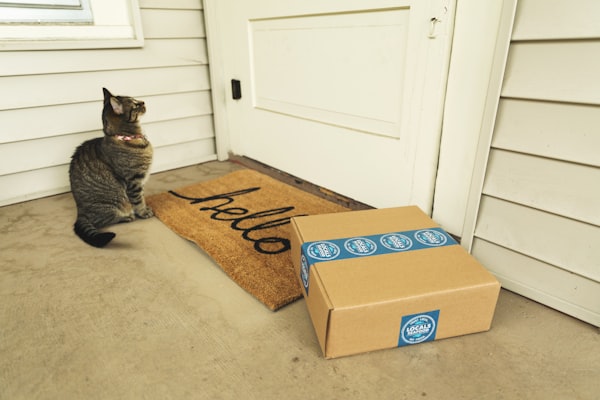
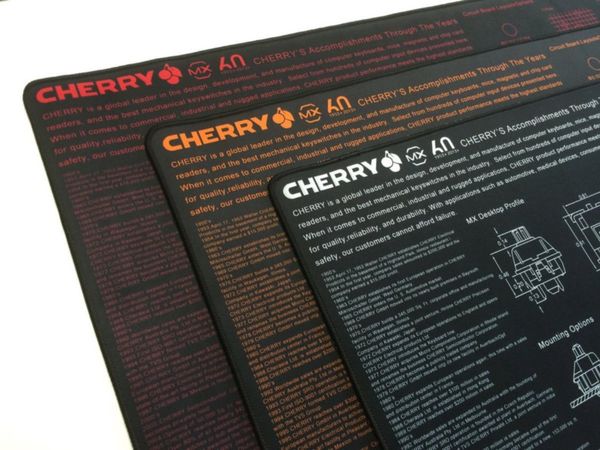
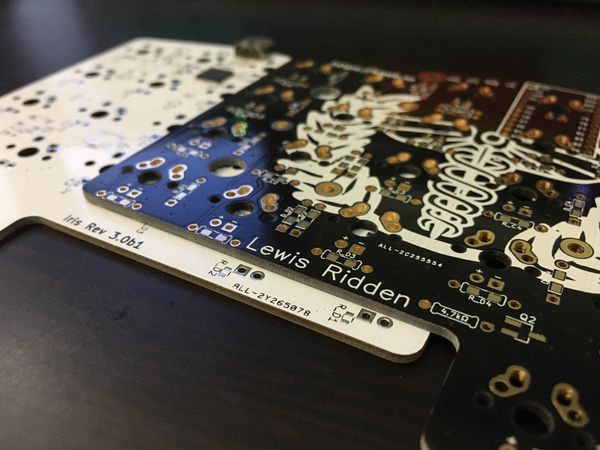
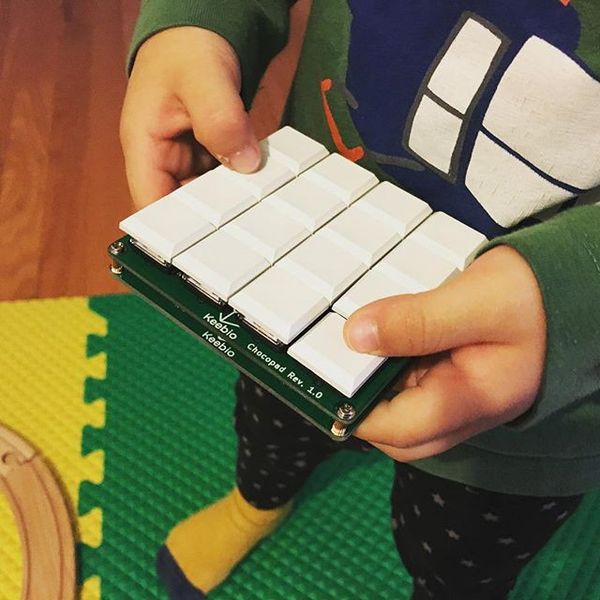
Member discussion